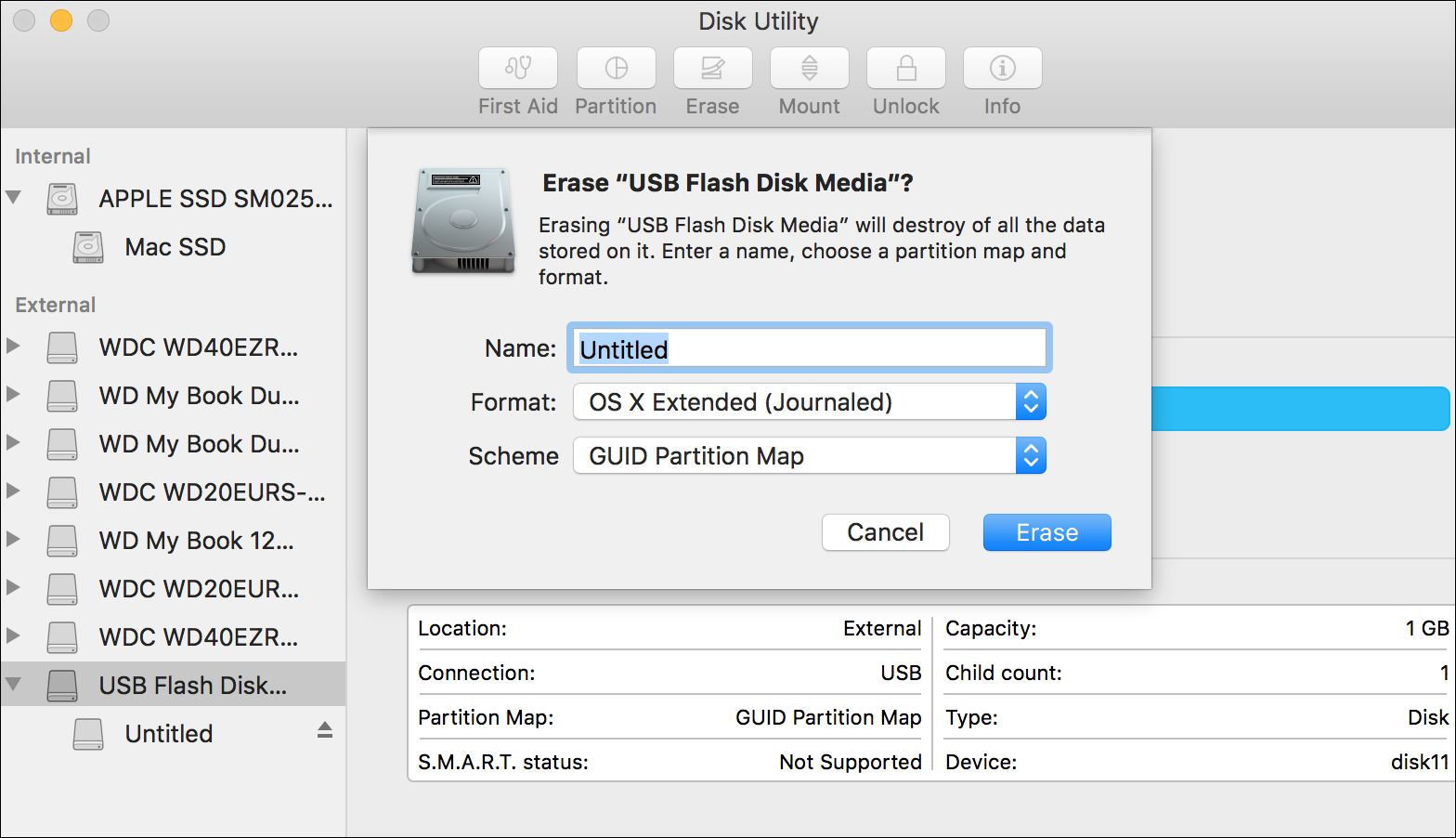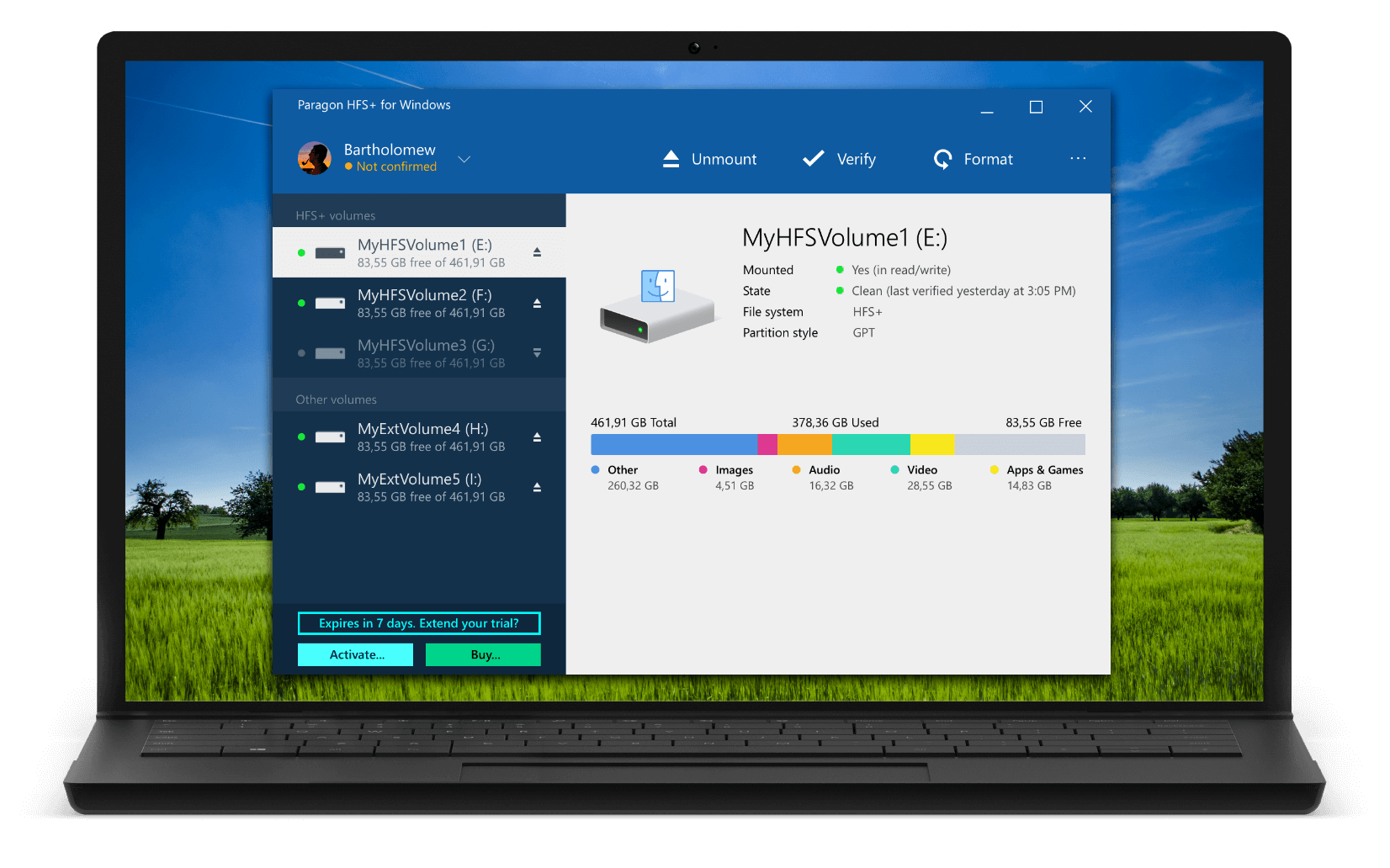- Format Flash Drive Mac Os Extended Journaled In Windows 7
- Using Flash Drive On Mac
- Format Flash Drive Mac Os Extended Journaled In Windows Media Player
- Format Flash Drive Mac Os Extended Journaled In Windows 8

I have booted Ubuntu 14.04 through a live cd. How do i format a usb to Mac OS X Extended (Journaled). Right now in GParted there isnt even an option to format the usb. I am not sure how to go about doing this. When using Disk Utility 16.3 with macOS Sierra to format a 'thumbdrive' USB 3 Lexar flash drive (64 gigs), when I choose a Format of ‘Mac OS Extended (Journaled)’, I get a list of three Scheme item.
Dec 03, 2020 • Filed to: Windows Computer Solutions • Proven solutions
Whenever you are trying to partition a hard drive, you are presented with the decision of choosing its file system. A file system is required to determine the procedure of retrieval and storage of data on the storage media. Each operating system has a different set of file systems that it supports. While in earlier days the choice of the file system was limited, there are multiple options available to you nowadays. Each file system available has its own strengths and benefits to offer you. While some file systems are ideal for one type of hard drive, others are best suited for another hard drive type. You can pick any of these file systems for your hard drive depending on its type.
APFS:APFS is the short form of Apple File System which has been recently released as a new feature for the latest operating system developed by Apple, macOS High Sierra. While this file system is primarily designed and optimized for flash drives and SSDs (Solid State Drives), it can be used for hybrid or mechanical drive without encountering much trouble.
Mac OS Extended: Mac OS Extended is the oldest file system that is compatible with all versions of Mac OS dating back to 1998. It is also referred to as HFS+ or HFS Plus and is the default file system that is used by older Mac OS versions for any storage device. The macOS High Sierra, however, only utilizes this file system for hybrid and mechanical drives.
ExFAT: AFPS and Mac OS Extended only work on Macs and can’t be used for other operating systems. ExFAT is the file system that is compatible with both Macs and Windows. It is thus a cross-platform file system that can be used for external drives either plugged to a Windows PC or a Mac with consummate ease.
How to Choose the File System
So, you have three different file systems that you can use for partitioning your hard drives. The following are some tips on how you can choose the best file system for different types of storage media.
1. APFS: Best for Solid State and Flash Drives

APFS is the file system that is most appropriate for flash drives and SSDs. In fact, the macOS High Sierra uses it as the default file system for these two drives. This new file system by Apple has considerable advantages over other file systems particularly Mac OS Extended. For starters, it is much faster at copying and pasting folders than the older file systems and doesn’t take much time in determining the space occupied by a folder on the drive. Moreover, Apple has made extensive reliability improvements for this file system which ensures lesser instances of file corruption than in previous file systems.
While there are countless advantages of APFS, it does have its downsides as well. For instance, you need to have the latest Mac OS, macOS High Sierra, in order to write to this file system. Macs running on older versions of Mac OS won’t be able to utilize this file system. So, if you want the drive to be used on Macs which don’t have macOS High Sierra then you should not format them using APFS. Also, keep in mind that APFS isn’t compatible with Windows so drives formatted with this file system can’t be read by Windows PCs.
2. Mac OS Extended: Best for Mechanical Drives or Drives Used with Older macOS Versions
Before the release of APFS, Mac OS Extended was the file system used by all Macs as their default file system. Even macOS High Sierra utilizes this file system as default for mechanical and hybrid drives. The reason for this is that APFS is not optimized for those drives and doesn’t offer the same benefits as it does for flash and solid-state drives. Even when formatting external drives, it is a better option to go for Mac OS Extended than APFS. Another advantage that this file system has over APFS is its compatibility with Time Machine. Thus, Mac OS Extended is the most suitable file system to be used for formatting backup drives.
So, if you have a drive that is to be used with Macs running on earlier versions of Mac OS than macOS High Sierra, then you should only format it using Mac OS Extended. Moreover, all mechanical drives should be formatted using Mac OS Extended too.

Format Flash Drive Mac Os Extended Journaled In Windows 7
3. ExFAT: Best for External Drives Shared with Windows Computers
If you make use of both Windows PCs and Macs and have an external drive which is to be plugged to both, then you can neither use Mac OS Extended or APFS. In such circumstances, you need a cross-platform solution that can be read and written to by both Windows and Mac OS. ExFAT is the best option available to you in this regard. This file system was developed by Microsoft in the year 2006. It allows you to format external drives that need to be used by both Macs and Windows PCs. This file system doesn’t have partition and file size limitations like FAT32, which is the older file system that offers cross-platform compatibility.
While ExFAT is definitely the best cross-platform file system, it does have its faults. For instance, it is vulnerable to file corruption and doesn’t support features like metadata offered by APFS and Mac OS Extended.
File systems are important for making full use of a storage device and determine how data is to be retrieved and saved on them. When you are partitioning or formatting drives, you need to choose a file system of your choice. Usually, there are three options available which include APFS, Mac OS Extended, and ExFAT. Each of these file systems has its own strengths and weaknesses and are different from each other. You need to decide which one is more suitable for your needs and then use it to format your drive.
Using Flash Drive On Mac

Your Safe & Reliable Data Recovery Software
- Recover lost or deleted files, photos, audio, music, emails from any storage device effectively, safely, and completely.
- Supports data recovery from recycle bin, hard drive, memory card, flash drive, digital camera, and camcorders.
- Supports to recover data for sudden deletion, formatting, hard drive corruption, virus attack, system crash under different situations.
Format Flash Drive Mac Os Extended Journaled In Windows Media Player
Computer Data Recovery
Format Flash Drive Mac Os Extended Journaled In Windows 8
- Windows PE
- System problems
- PC Errors